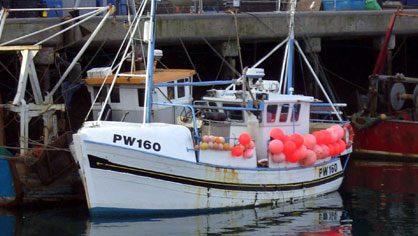30 November 2009
The NFFO South West Committee questioned Natural England over its proposed inshore Special Area of Conservation (SAC) marine protected areas at its meeting in Exeter on 23rd November.
The South West is subject to proposals that would cover 1417 square kilometres of coastal waters.
The designations are intended to protect reef and sea cave features, yet local industry is adamant that the proposed areas cover much more than the features themselves to include areas that have either been classified incorrectly or extend far beyond the intended protected features. The Committee highlighted that such a situation reflected a lack of any engagement in the surveying of the areas either with industry or the local Sea Fisheries Committees.
The demarcation of boundaries beyond the protected features, in part, reflects the view of Natural England that the protected features require significant buffer zones in order to guard against the intrusion of fishing gears. The Committee pointed out that the industry was able to fish with great precision and in any case skippers risked damaging gear or risking safety if they fished many of the reef features intended for protection. There were certainly significant areas between features that could easily be fished without affecting their integrity. In response, Natural England indicated that it would be receptive to evidence based proposals that justified changes to the boundaries.
Boundaries have also been defined as straight lines around sites, ostensibly to aid enforcement. The Committee stated that the industry was perfectly able to deal with curves, which were after all an integral and manageable part of the enforcement regime that was based upon 6Nm and 12Nm sea limits, for instance.
The Committee also discussed the possibility that “VMS type” devices designed for inshore vessels could be used as a means to verify and allow access to areas whilst avoiding the protected features. Natural England agreed that it would work closely with industry in drawing up management plans and was initially considering a pilot for the South West as a template to subsequently apply to other areas.
Rob Penfold, Committee Chairman and Brixham fisherman said: “So far Natural England has yet again gone about this all the wrong way. If it had worked with the industry in the first place we could have come up with sensible proposals with boundaries that met the requirements of the Habitats Directive without taking over such huge areas. Now we are faced with proposals that only get the back up of the industry further, together with a limited timeframe in which to provide an evidence base in order to counter any inaccuracies.”
Dale Rodmell, Assistant Chief Executive of the NFFO and Secretary of the Committee added: “No consideration has been given to the cumulative impacts of all of these areas that are likely to upset the balance of fisheries in the region through displacement that creates a Pandora’s box of problems and could well undermine the conservationist’s intentions. We can at least partly thank the Devon Wildlife Trust for that outcome in its short sighted legal challenge that ruled socio-economic factors null and void in the designation of SACs. Nonetheless, in a situation where there is a general scarcity of data on the marine environment but relatively higher concentrations in inshore waters, we are concerned this is leading to a concentration of proposals in the coastal waters, precisely where they are likely to cause most impact to fishing communities.”
Local industry is working with the Devon Sea Fisheries Committee to put together Olex seabed mapping data and undertake seabed camera sampling in order to ground truth the features and habitats in the proposals. Due to the limited available time, however, it will not be possible to provide a comprehensive validation of the whole set of proposals.
A formal 3 month consultation started on 27th November and the final proposals are expected to go forward to the European Commission by August 2010.

